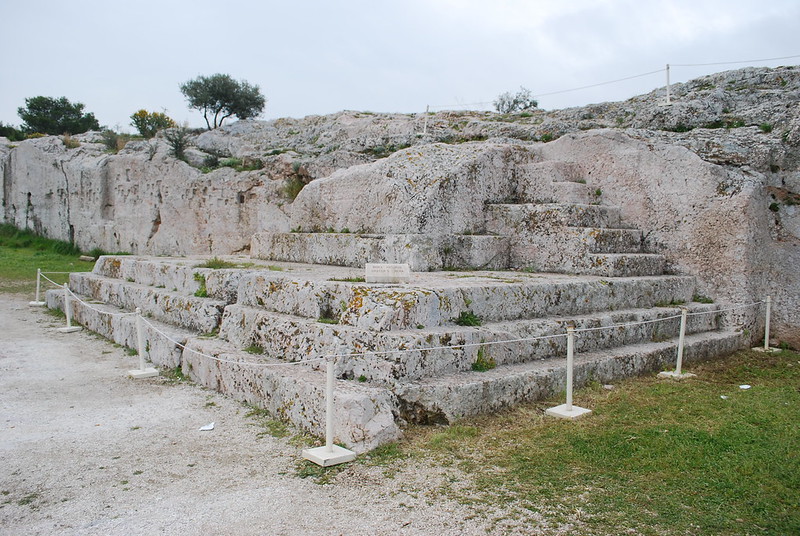
It is highly recommended while in Athens not to miss Pnyx Hill; it is located about 1 km west of the Acropolis and is one of the most important sites in Athens. You may visit it on your own, but you can also book a private customized tour with one of the highly qualified, licensed tour guides of Athens Walking Tours, learn all about the history and better comprehend the significance of these top historical sites. Apart from its historical importance, Pnyx hill offers splendid views of the Acropolis, the surrounding mountains, the port of Piraeus and the city itself. To get there you may take the beautifully paved walkway that begins at the junction of Dionysiou Areopagitou and Roberto Galli street. Once you see the small church of Aghios Dimitrios, turn right to reach the Pnyx plateau.
The Pnyx was the official meeting place of the Athenian democratic assembly that was first held in the Agora at the foot of the Acropolis, and which was moved to this hill west of the Acropolis in the early 5th century. This new meeting place came to be called "Pnyx" (from the Greek word meaning "tightly packed together").
The hill's capacity was 6.000 to 10.000 people. They sat on the ground or brought portable seats with them. Only Athenian citizens had the right to participate, and they had to be over 18 years of age. In the beginning, it was a plateau with a retaining wall in the North, still visible today.
There are three construction periods of the Pnyx: The first dates from the beginning of the 5th century BC, the second from the end of the 5th century BC, and the third one from the middle of the 4th-century BC. The Pnyx was in use for about 200 years from the beginning of the 5th century to the end of the 4th century BC, when the place of the assembly meetings was relocated into Dionysus theater, on the southern slope of the Acropolis. During the Roman period, it served as the Sanctuary of Zeus with healing attributes. The Greek Archaeological Society began excavations in 1910, however, large-scale excavations were conducted at various times between 1930 and 1937.
The Orator's Bema: A three-stepped stone construction, the stand from which the speakers addressed the assembly. The original use of the bema in Athens was as a tribunal from which orators addressed the citizens as well as law courts. The greatest political struggles of Athens during its golden age were fought at this site. Great politicians, as well as orators, such as Pericles, Aristides, and Alcibiades spoke there.
.jpg)
Cover Photo by Panegyrics of Granovetter, flickr
